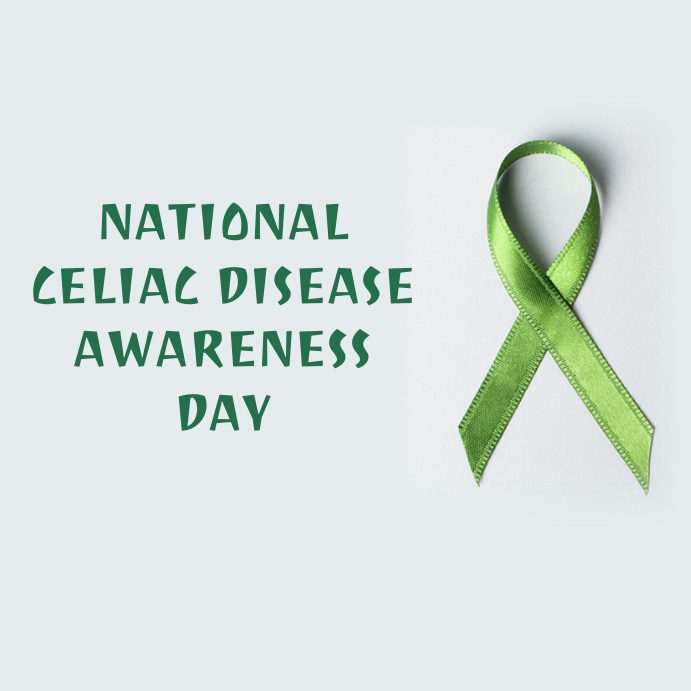Search by Color or Cause


National Celiac Disease Awareness Day is observed on September 13 each year.
Dr. Samuel Gee was born in the UK on September 13, 1839. He wrote a paper titled On the Coeliac Affection in 1888 which described celiac disease. The paper recommends “To regulate the food is the main part of the treatment…The diet recommended may seem to be scanty, but we must never forget that what the patient takes beyond his power of digestion does harm.” He concludes, “But if the patient be cured at all, it must be by means of diet.” Celiac disease patients do not eat gluten, which reduces their digestive symptoms.
Wear a light green pin, fabric ribbon or wristband in observance of National Celiac Disease Awareness Day.
Celiac disease is an autoimmune disease that’s triggered by consuming gluten and results in damage to the small intestine. When a person with celiac disease eats gluten, the immune system sees gluten as a threat and mounts an attack. However, it ends up damaging the villi of the intestines, which help to digest food. Damaged villi make it nearly impossible for the body to absorb nutrients, leading to malnourishment and a host of other issues.
The most common symptoms of celiac disease include:
People with the following conditions have an increased risk of developing celiac disease:
A blood test is used to identify Celiac disease. If the results are positive for celiac disease, patients usually undergo an upper endoscopy with biopsies as well. An upper endoscopy with biopsies is the gold standard for diagnosing celiac disease.
Currently, the only celiac disease treatment is a strict, lifelong gluten-free diet. A gluten-free diet means avoiding all foods that contain wheat, rye, and barley in all forms. Learn more with our gluten-free diet overview. There are currently no surgical treatments or medicines available to treat this autoimmune disease. Researchers are working hard to find alternative therapies and possibly a cure.
If people with celiac disease continue to eat gluten, it increases the risk of developing or worsening:
Celiac disease is hereditary, which means that in order to develop it you have to have one or both of the HLA-DQ2 and HLA-DQ8 genes. Having the gene(s) alone is not enough, however. It is estimated that 30 to 40% of the population has one or both of the genes that are linked to celiac disease, but only 1% develop the disease. Some other factors or environmental causes activate the genes, causing the body’s immune system to react to gluten and damage the small intestine. What the factors are that activate celiac disease in susceptible people is still a mystery, though research indicates that stressors such as illness, trauma, puberty or childbirth may play a part.
It is believed that celiac disease first began in humans at the advent of the first agricultural revolution. As early human diets began to expand, adding in grains, domesticated livestock and cultivated crops, most bodies were able to adapt. However, some did not. This resulted in certain food sensitivities, intolerances and celiac disease making their first appearances in human history.
Before the real trigger for celiac disease was discovered, many treatments and diets were tested, including strict rice, mussel and even banana diets. It wasn’t until World War II that wheat and, finally, gluten began to come into focus as the culprit.